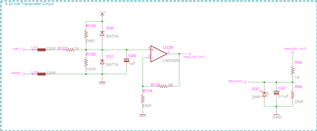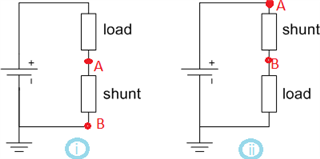Other Parts Discussed in Thread: LM358, , TLV9062, LMV358A, TLV9002, LM7705
Hi,
We are using CC3220MODSF12MBR and LM358AIDR to read the analog voltage, working fine.
1. Now we have to measure the DC current using shunt resistor. My question is can we connect Shunt Resistor to the attached Circuit directly like, Shunt end A to AIN1 of schematic and Shunt end B to AGND1? or need additional circuit/converter? kindly advise. Shunt output will be 0-75mV.
2. Also confirm, In general, what will be the accuracy we can achieve from this schematic/LM358AIDR?
3. What will be the minimum Voltage we can measure from this circuit?


Thanks and regards,
Naveen K





